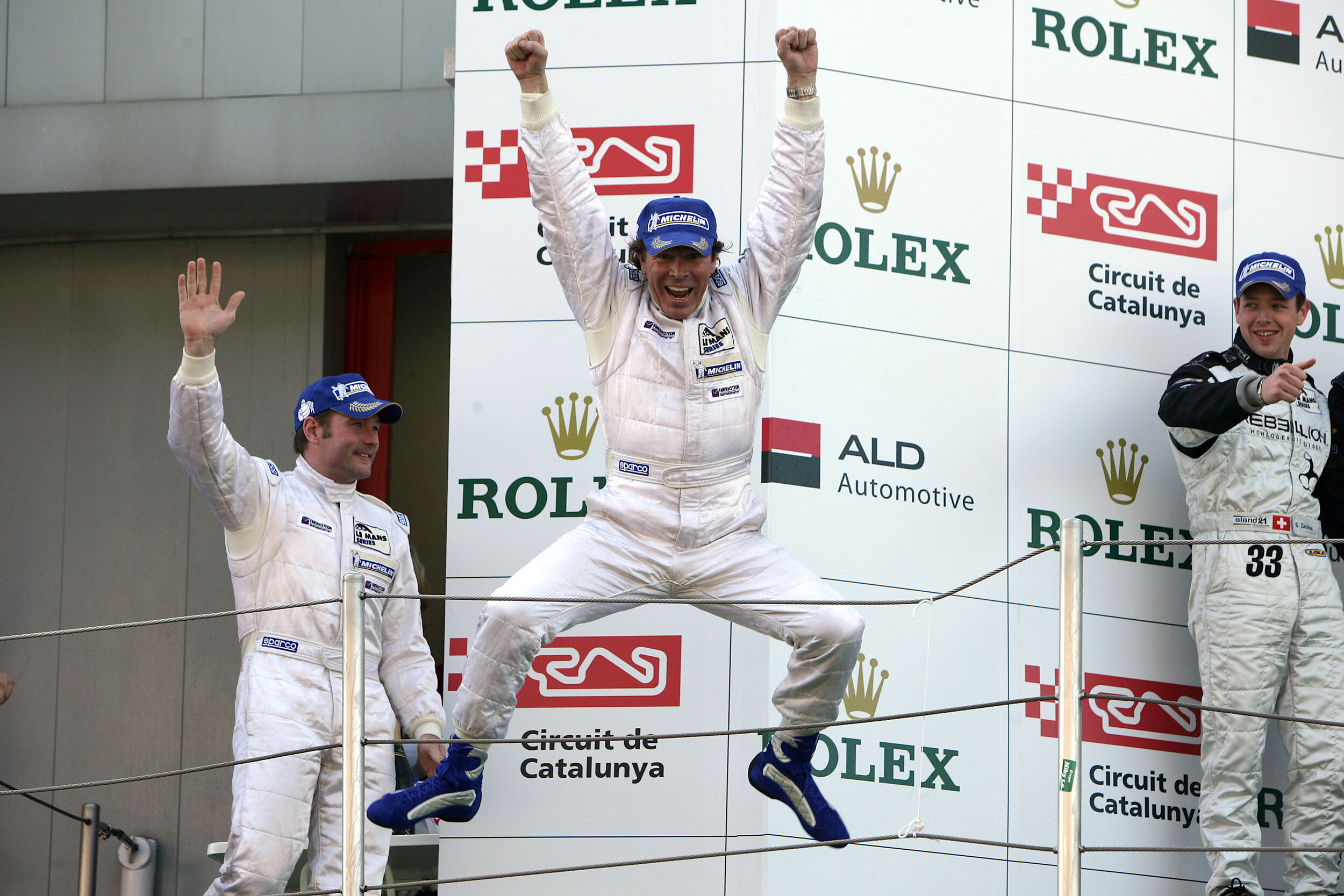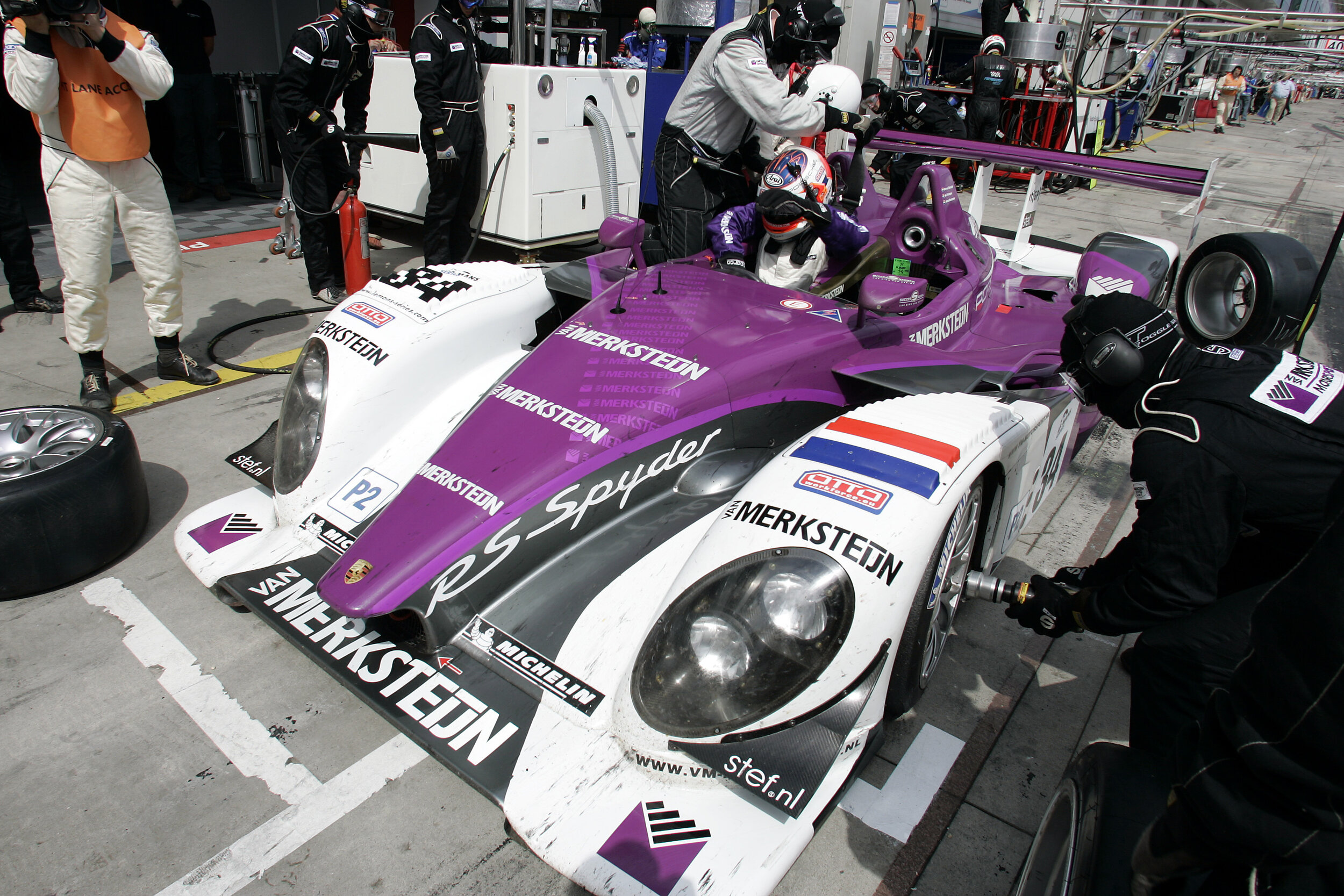Van Merksteijn Motorsport – Powered by Patriotism
During last month’s Dutch Grand Prix at Zandvoort, a latent devotion and love for motorsport poured out in a sea of orange at the seaside circuit. Since Max Verstappen arrived in Formula 1 as a teenager, the relentless hard charger has grown a national passion for motor racing through Formula 1’s enviable platform. However, Max’s dedicated ‘Orange Army’ weren’t recruited overnight.
PHOTO CREDIT GETTY IMAGES/RED BULL CONTENT POOL
Away from the glamour of Formula 1, sports car racing played a critical role in motor sport’s popularity in The Netherlands. Porsche is crucial to this story. As early as 1957, Carl Godin de Beaufort became the first Dutchman to win his class at Le Mans for the Stuttgart firm.
Gijs van Lennep was unquestionably the most successful Dutch driver who represented Porsche. After many outings for Racing Team Holland in various privately run Porsches, van Lennep joined the Porsche works team in 1967. Four years later, Gijs clinched Porsche’s second outright victory at the 24 hours of Le Mans. Sharing driving duties with Helmut Marko in the Martini backed 917, van Lennep set a distance record which wouldn’t be bettered until 2010.
Arguably, van Lennep’s finest achievement was his triumph in the final Targa Florio in 1973. Together with Herbert Muller, van Lennep squared up to exotic machines from Alfa Romeo and Ferrari in a 911 Carrera RSR. Despite some choice modifications, including 917 wheels and brakes, the Martini Porsche crew were theoretically outgunned by Alfa Romeo and Ferrari’s prototypes. Nevertheless, pulling off underdog upsets at the Targa Florio had become a Porsche signature act. As all the monstrous top-class machines floundered in the Sicilian sunshine, the light footed RSR danced to yet another victory and completed another thrilling chapter in Porsche’s motor racing story.
Gijs van Lennep’s final bequest to Porsche came at the 24 hours of Le Mans in 1976. Teaming up with Jacky Ickx, the Bloemendaal native drove the Martini 936 to victory and duly retired from racing.
In recent times, supermarket tycoon Frits van Eerd has enthusiastically waved the Dutch flag with his Racing Team Nederland outfit. As full season entrants of the World Endurance Championship, van Eerd and his Dutch co-drivers strive to win the coveted 24 hours of Le Mans. However, if the Dutch team can eventually win the endurance classic in their Oreca LMP2 machine, they will not be the first all-Dutch crew to do so. This honour currently belongs to the 2008 van Merksteijn team and their Porsche RS Spyder.
PHOTO CREDIT FIA WEC
Peter van Merksteijn indulged a love of motor racing alongside his daily life running his family’s successful steel business in Almelo. Prior to his successful all-Dutch campaign with the Porsche RS Spyder, van Merksteijn had already shown his beaming pride for local talent. Driving for the ambitious Dutch Spyker team, van Merksteijn strived to bring home success for his country’s very own sportscar. However, reliability issues thwarted the steel mogul’s campaign for success.
PHOTO CREDIT SPYKER CARS
In late 2007, Peter van Merksteijn decided to rekindle the dream to take an all-Dutch team to a Le Mans victory. Sadly, a program with the Dutch built Spyker would be a step too far. Nevertheless, van Merksteijn assessed his options to find the best machine for the job. For the 2008 season, Porsche’s RS Spyder became available to private teams for the LMP2 class of the European focused Le Mans Series. Given the dominance of the Team Penske Porsche RS Spyders over the LMP1 Audis in the 2007 American Le Mans Series, the flyweight Weissach machine became the clear choice.
With naked carbon RS Spyder now acquired and ready for dressing in van Merksteijn motorsport’s white and purple livery, attention focused on finding two Dutch superstars to share driving duties with Peter van Merksteijn.
“Peter was working together with a Dutch team for a long time for his other racing activities, run by Frans Verschuur. In the end, he chose this team” explains van Merksteijn driver, Jeroen Bleekemolen. “That’s how it started. I’d driven for the team in the past and Peter wanted to make it a Dutch team. In the end, Peter looked around and put together the best possible team to win the race.”
Regarded internationally as one of the most dependable drivers in endurance racing, Bleekemolen was an obvious choice for the three-man team. “I was contacted early for the programme because, at the time, I was known as the Dutch endurance driver who was racing everywhere. So, the team said they wanted me in the car and pretty soon we made a deal” recalls Bleekemolen.
For his final driver, van Merksteijn looked to the ranks of Formula 1. Discussions with 2007 Spyker F1 driver, Christijan Albers, led to a dead end. However, van Merksteijn strived to bring a former Dutch Grand Prix was Peter van Merksteijn’s prime target. Although initially hesitant, Verstappen soon warmed to the idea of a Le Mans campaign and duly signed for the team.
Armed with a crack team of fellow Dutchman, van Merksteijn motorsport headed to Guadix for a shakedown test in March 2008. “We went to Spain for the first test, and I had the honour to drive the car for the very first time,” remembers Bleekemolen. “It was amazing. We thought the test would be just a roll out, but everything was just perfect. I left pit lane and did an installation lap. Everything felt good. No issues, no alarms. Nothing. Straight away, we could go on and test the car. We could work on set up and all that stuff.”
Preparations for Le Mans ramped up at the 1000km of Catalunya on the 6th of April 2008. Despite a two-year break from racing, Jos Verstappen gelled immediately with the RS Spyder. While the rival RS Spyder teams hit problems, Verstappen scythed through traffic and handed over the #34 RS Spyder to van Merksteijn in first place. van Merksteijn promptly acquainted with his new car and cruised to a maiden win.
Three weeks later, van Merksteijn motorsport continued their supremacy by qualifying on pole for the 1000km of Monza. While leading the race, van Merksteijn’s crew were rudely awoken from a dream start to the season when an errant competitor ploughed into the back of their #34 Porsche. Miraculously, Verstappen and van Merksteijn valiantly fought back to second place after losing three laps in the pits. This minor blip would be the only interruption in a perfect season for van Merksteijn motorsport.
A relative home fixture at the 1000km of Spa-Francorchamps presented the final opportunity to prepare for the 24 hours of Le Mans. Flaunting his magical ability and stubborn bravery, Verstappen delighted the Dutch fans with yet another pole position. Despite an early challenge from the Speedy Racing Team Sebah Lola and a faulty headlight, Verstappen and van Merksteijn surged to another Le Mans Series victory. Thus, becoming favourites for the 2008 24 hours of Le Mans LMP2 class.
During qualifying for the 2008 24 hours of Le Mans, Verstappen reminded the motor racing world of his superhuman talent at the wheel of the Porsche RS Spyder. Considering that Verstappen had never raced at Le Mans before, the Dutchman’s pace was even more astounding. Even Porsche factory driver and RS Spyder veteran, Sascha Maassen, couldn’t match Verstappen’s pole position benchmark. Van Merksteijn’s vision of taking on the world with his fellow countryman blossomed in the French countryside.
In the opening quarter of the race, van Merksteijn’s team traded blows with the blue RS Spyder of the Danish, Team Essex outfit. Regrettably, several puncture woes and electrical gremlins stumped Team Essex’s challenge. Meanwhile, Verstappen and Bleekemolen slogged through the night without incident, enjoying a commanding advantage by daybreak. From this first glimmer of sunlight, offering hope of a victory, to the checkered flag at 3pm, the van Merksteijn crew held firm at the front. At their first attempt, the Dutch trio had triumphed at Le Mans.
For Peter van Merksteijn, winning Le Mans with an all-Dutch team fulfilled a goal driven by belief in his compatriots. Furthermore, Le Mans victory cemented Bleekemolen’s status as an all-star endurance racer. Most notably, Peter van Merksteijn’s campaign revived Jos Verstappen, a lost talent who had been thrown on the scrapheap by the racing fraternity. Throughout 2008, Verstappen was simply untouchable at the wheel of the van Merksteijn RS Spyder.
Following their Le Mans triumph, van Merksteijn continued steamrolling the Le Mans series while Verstappen claimed the driver’s title with a round to spare. Furthermore, van Merksteijn motorsport were also crowned Le Mans Series team’s champions.
Van Merksteijn motorsport’s exceptional strike rate eclipses every other team that campaigned the Porsche RS Spyder, including the might of Team Penske. However, the program became a victim of its own success. “The plan was that we were going to do two seasons” recounts Bleekemolen. “The first year would be to learn about everything, get some results, and hopefully win Le Mans in the second year. The car won everything, and Peter thought that because we’d won it, we didn’t need to come back. So, Peter pulled the plug on the programme a year earlier than planned, which was a shame because it would have been fun to do another year.”
By Peter MacKay


















